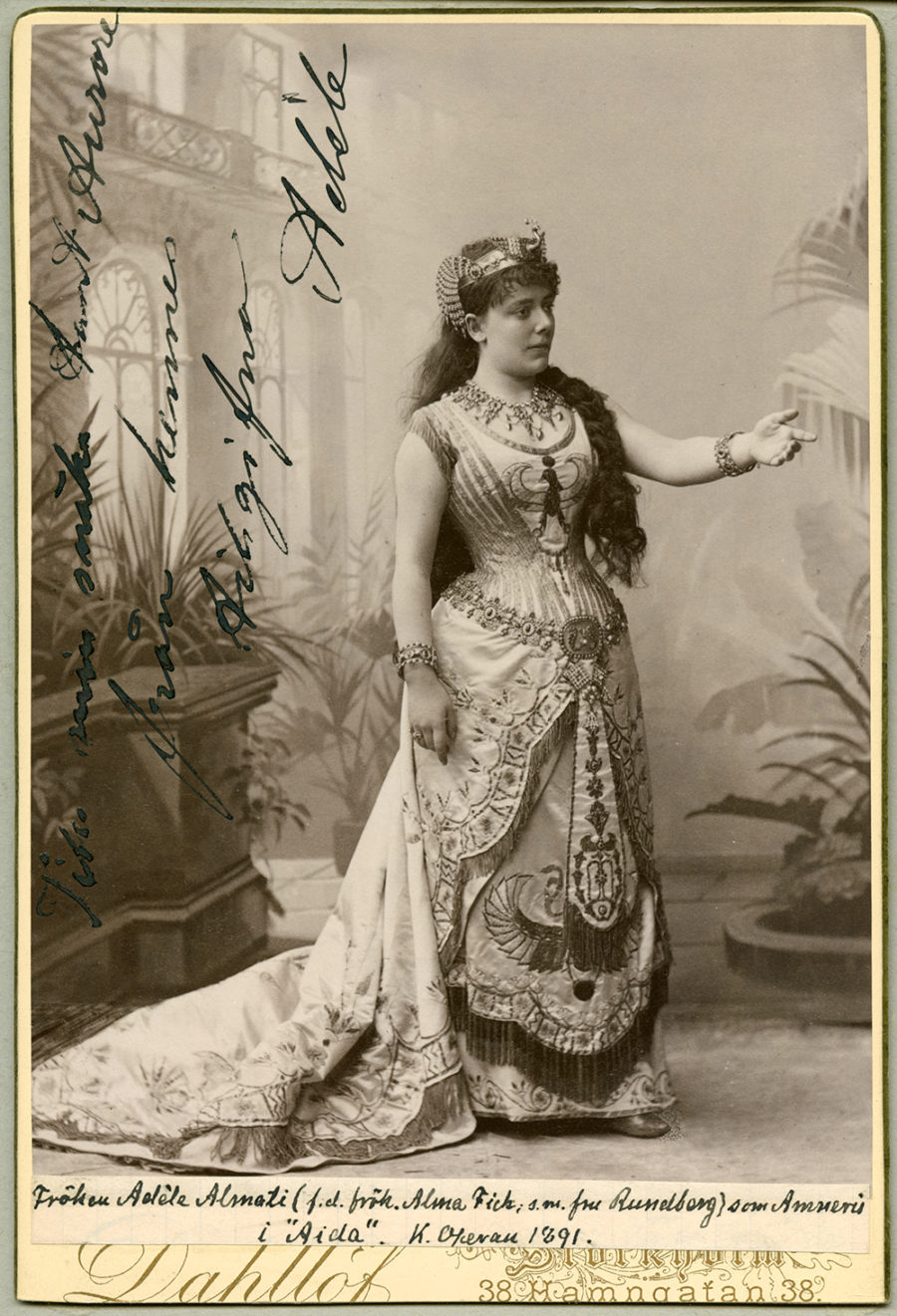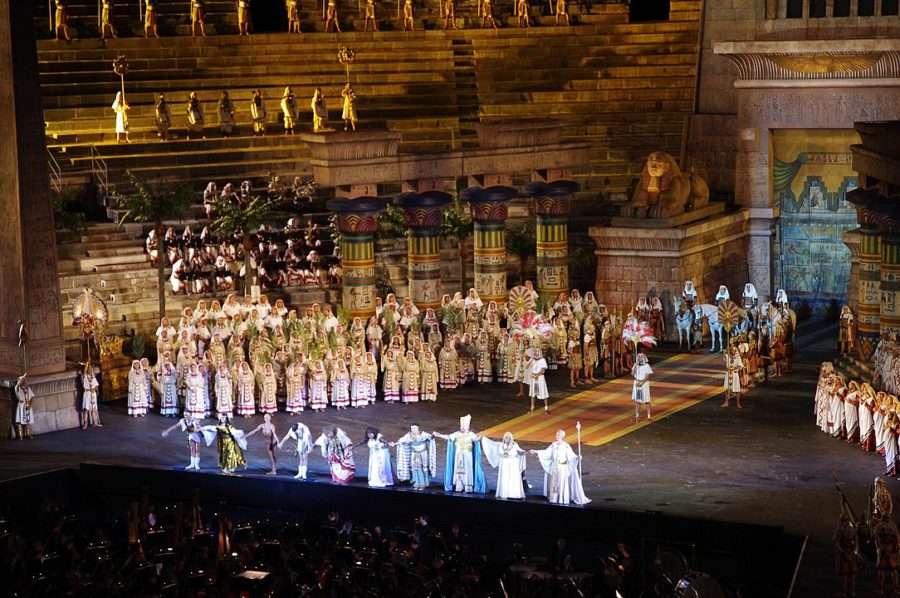
1908 poster for “Aida”, performed by the Hippodrome Opera Company of Cleveland, Ohio
Welcome to the KUSC Guide to Opera, a new series of blogs designed to help you explore the world of opera. Whether you’re newly interested, vaguely curious, or looking to expand your knowledge, this series will help break down the jargon, introduce you to some gorgeous music, and the local groups putting on incredible performances in the Southern California.
Three of opera’s biggest hits just happen to fall alphabetically next to each other – Aida, La bohème, and Carmen. In this series of blogs, we’ll take a deeper dive into these gems of the stage and explore what makes them so special.
The grandest of all grand operas fills the final spot on our ABC’s of Opera series. Taking place in Ancient Egypt, full of large, lush musical moments, and typically produced with a massive chorus of singers, grandiose sets, and dazzling costumes, Giuseppe Verdi’s Aida is the definition of escapism. It transports you to a faraway land in a faraway time and fills your evening with romance and spectacle.

Giuseppe Verdi
Verdi was commissioned by a leader in the Egyptian monarchy to write an opera for the theater in Cairo. He was offered $20,000 (around $380,000 today adjusted for inflation) and went to work in earnest. He was shown a story that was offered by French Egyptologist Auguste Mariette (or Mariette Abey depending on the source) who also oversaw the set and costume design to ensure historical accuracy. The story was entirely fictional, though taking place in real capitals of the Egyptian Old Kingdom (around 2500 BCE). It centers on the love triangle between Amneris the Princess of Egypt, her female slave (and secret Ethiopian princess) Aida, and Radamès, the handsome captain of the guards whom both women love. This is all set against a backdrop of war between the opposing monarchs of Egypt and Ethiopia.

Adèle Almati as Amneris in “Aida” at Kungliga Operan, 1891

Frederik Brun as Radamès in “Aida” at Kungliga Operan, 1889
Unknown to them, Aida and Radamès are in love with each other, while Amneris also loves the captain – who doesn’t love her back. Over the course of the opera, Radamès goes from hero to traitor when he learns Aida’s true-identity. They confess their love and Radamès agrees to marry her. They work together with Aida’s father, the king of Ethiopia, to undermine the Egyptian effort in the war. This, of course, means Radamès betrays Egypt and its king. He is caught and sentenced to death for his crimes, though Amneris pleads for his life. Radamès is buried alive in a vault, happy to learn that Aida has escaped and will live free. It is only after the last stone is set in place on the vault that Radamès learns Aida is also there because she wants to die with him. They die in each other’s arms while Amneris is heard crying above, praying for an end to the war and for peace.
So yes, it’s not a happy story. In spite of this, and a real war that delayed its opening, Aida was an instant success after its Christmas Eve world-premiere in Cairo in 1871. When it opened at Milan’s La Scala the following year, Verdi was called to the stage for 32 curtain calls. It came to the U.S. not long after, making its domestic premiere at Philadelphia’s Academy of Music.

A production of “Aida” at the Roman Amphitheatre in Verona
A sense of grandness is what has helped the opera endure since the late 19th century. Several productions have included outdoor performances in view of the Great Pyramid of Giza, at the Roman Amphitheatre in Verona, and at the Acropolis in Athens. But then there’s the musical setpieces like the opening scene from Act II “Chi mai fra gl’inni e i plausi” (“Our Songs His Glory Praising”) featuring the pampered princess Amneris and her cadre of handmaidens, or “Celeste Aida” (“Heavenly Aida”) which is Radamès’ Act I confession of love for the titular character.
The opera has been adapted for film a few times including a 1957 production starring Sophia Loren as Aida, with famous soprano Renata Tebaldi providing the singing. In 1998, Elton John and Tim Rice (in conjunction with Disney) put their own stamp on the story by producing a Broadway musical based on the same source material as Verdi’s opera.
At its heart, Aida is about forbidden love. As Gale Edwards, director of the 2015 Opera Australia production, puts it, Aida is about “the triumph of love in a world which does not allow it.” Something that is needed today more than ever.
If you enjoyed this, read more about the ABC’s of Opera in the KUSC Guide to Opera.







